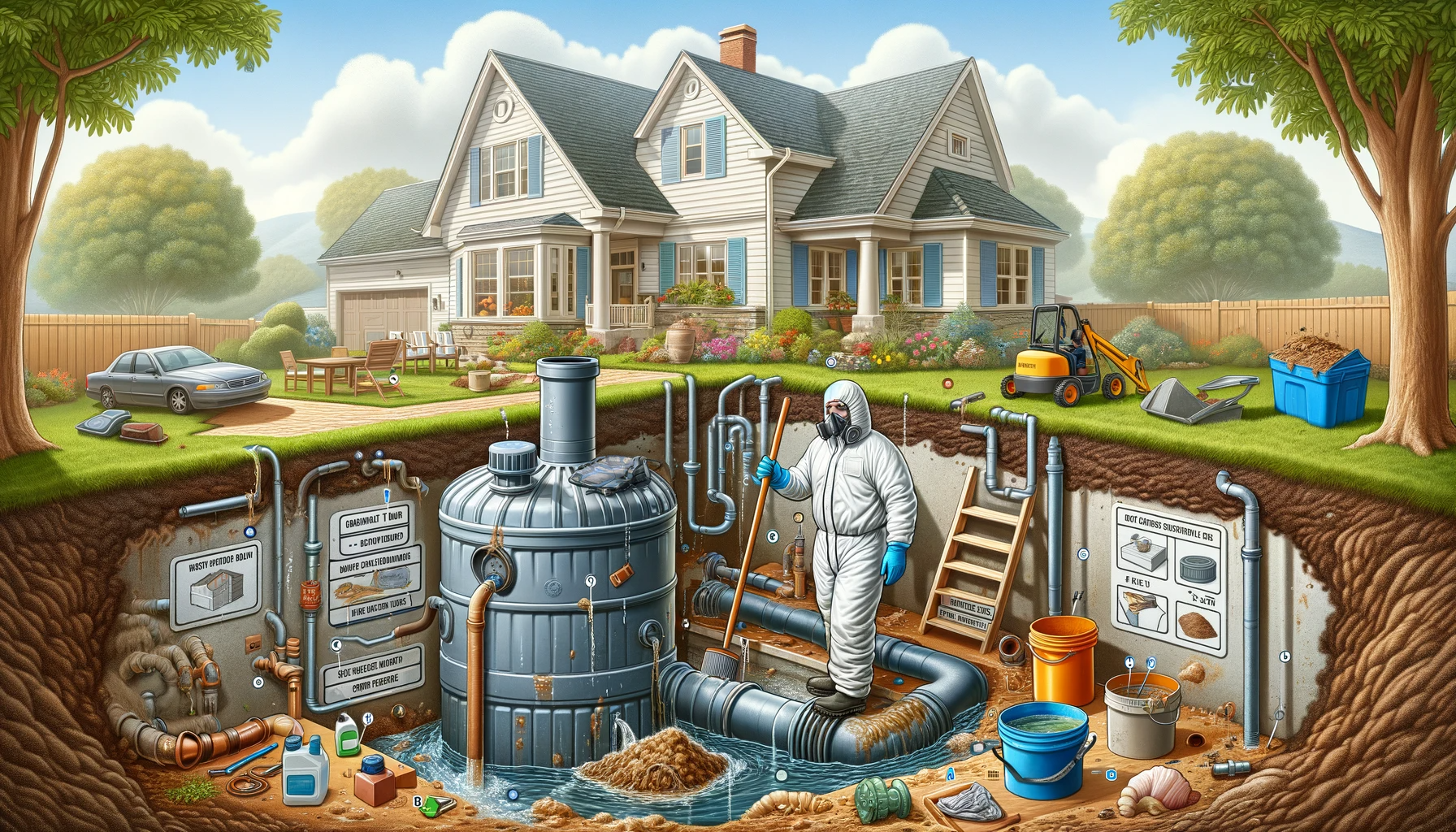Dealing with a backed-up septic system is a pressing concern for homeowners relying on this vital infrastructure. The readiness to avoid expensive repairs or replacements underscores its importance.
While septic systems efficiently manage household waste, they can unexpectedly encounter issues like backups. Swiftly understanding and dealing with these problems is crucial.
Recognising how to handle a septic emergency is essential, as immediate action during a backup is more cost-effective than replacing the entire system.
Let’s explore what a septic backup entails and the steps to prevent a messy and costly situation.
What is Septic Backup?
Septic backup happens when there’s too much sewage and wastewater in the septic system, causing an overflow.
This overflow can end up in places it shouldn’t be, like your sinks, toilets, or drains at home. Signs that this might happen include slow drains, weird sounds from pipes, or gross smells inside or outside your house. Aside from being a nuisance; it can also be bad for your health and your property.
Imagine dealing with sudden sewage flooding in your home—it’s not just messy but can also pose health risks for you and your family.
What are the Signs of a Septic Build-up
Usually, backups don’t occur suddenly. Therefore, you can detect early warning signs before discovering unpleasant puddles in your home.
Signs of an impending backup may include:
- Wet And Overly Healthy Yard
- Slow-draining sinks and toilets
- Gurgling or bubbling sounds from pipes
- Foul odours in the home or yard
- Sewage backups
What Causes a Septic Tank Backup?
-
Flushing Non-biodegradable Items
Flushing non-biodegradable items like paper towels, hygiene products, or grease can mess up your septic system. These things don’t break down easily and end up piling together, causing serious clogs.
They block the system, making it tough for wastewater to flow properly and increasing the chances of backups and system issues.
-
Tree Roots Growing Into Your Pipes
When pipes develop cracks, they become liable to tree roots entering and blocking the water flow. Trees can extend their roots surprisingly far from where they’re planted.
So, if there’s a crack in a drain line, tree roots have a way of finding their way in, causing a blockage. When pipes are damaged, tree roots seem to have a knack for getting inside.
-
Flooding After Heavy Rainfall
When heavy rain pours down, your property might experience flooding. The excess rain saturates the soil, which typically does a great job of soaking up liquid waste from your septic system.
However, when the soil becomes overly saturated, as it does during heavy rainfall, it loses its ability to absorb properly. This saturation leads to drainage issues, as the soggy soil impedes the efficient draining of liquid waste, potentially causing backups or overflows within the septic system.
-
Increased Water Use
Using a lot of water in a short time can put too much pressure on your septic system. When this happens, the system can’t handle all that water, causing it to struggle and leading to backups.
-
Poor Installation
If you didn’t oversee the construction of your home, it may be uncertain who installed the septic system or how old it is. The tank might be undersized, or its pipes could have aged, leading to rust and eventual damage, which can cause malfunctions in the system.
How do I Handle a Septic Backup?
-
Stop Flushing and Draining
If you suspect a septic backup, it’s crucial to halt the use of toilets and drains immediately. This helps prevent further overflow and eases the strain on the already overwhelmed septic system.
Specifically, after a major storm causes a backup, it’s important to give the drain field time to dry out before resuming activities that involve water usage, such as taking showers or doing laundry.
-
Steer Away From Using Harsh Chemicals
Avoid using strong chemicals or commercial drain cleaners when you’re facing a septic backup. These products can make the problem worse by harming the helpful bacteria in the septic tank.
These bacteria play a crucial role in breaking down waste. When these chemicals kill off these helpful bacteria, it disrupts the system’s natural balance, making the backup even more challenging to handle. It’s better to use gentler, septic-safe alternatives to maintain the health of your system.
-
Allow For More Ventilation
During a septic backup, it’s essential to act fast. Open windows and doors to let fresh air in and help clear out any bad smells caused by the backup. This simple step improves the airflow inside your home, making the indoor air fresher and more pleasant.
This helps make things a bit more bearable while dealing with the challenges of a septic system emergency.
-
Leave The Affected Area
Should your home experience a wastewater backup, it’s vital to vacate the affected areas immediately to prevent potential health risks. Avoid any direct contact with sewage or polluted water, and ensure that both children and pets stay away from these affected zones until the issue is resolved.
-
Call a Professional
If you ever experience a septic system backup, you should quickly get in touch with a licensed septic system professional. Trying to resolve the issue without the right know-how could make things worse and create more complications.
Conclusion
Facing a septic system backup can be a challenge for most homeowners. Recognising warning signs and taking immediate action can greatly minimise potential health risks and prevent extensive financial or structural damage.
Are you grappling with a septic system backup? VI Reel Septic and Excavation is your dedicated ally in swiftly resolving these challenges. Our team of experts is just a call away, ready to safeguard your home and family. Contact us now for prompt and effective solutions, ensuring the well-being of both your property and your health.


